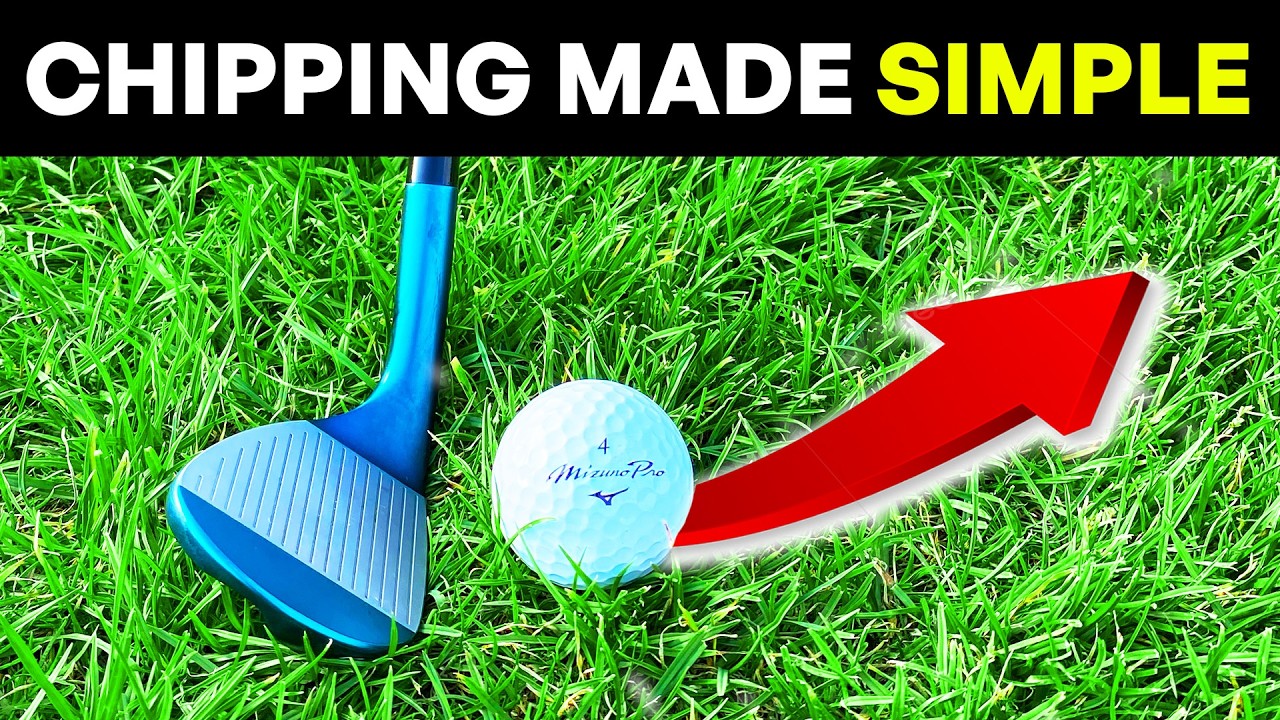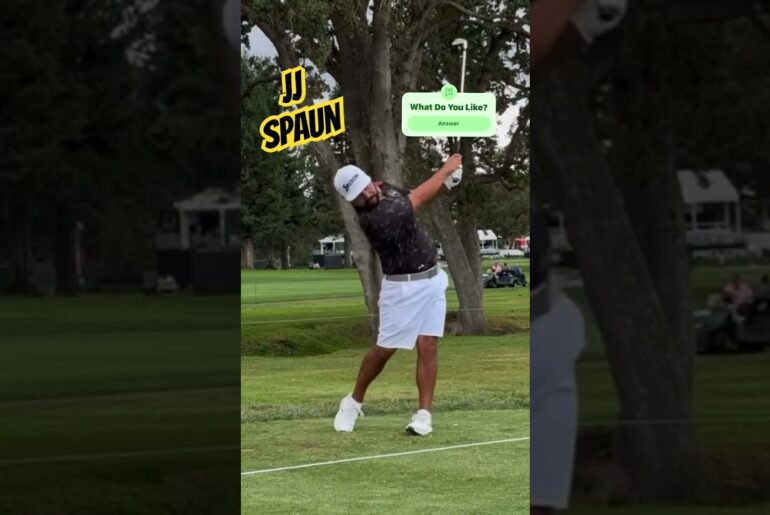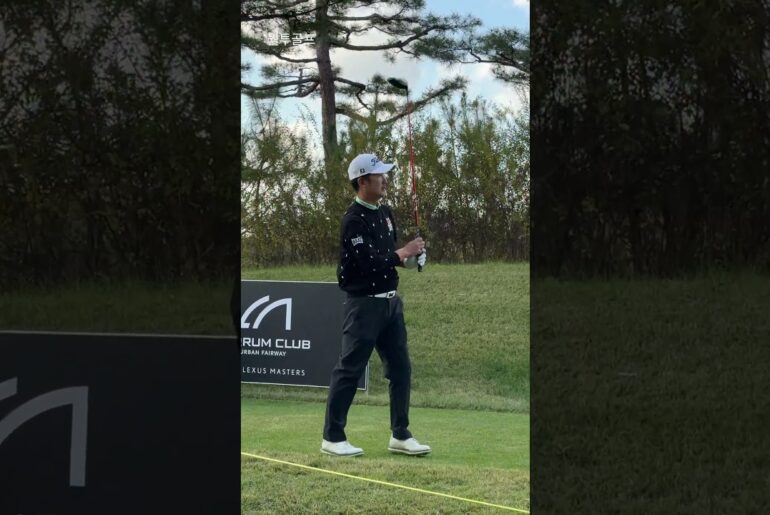It’s simple really, if you are not doing the things that I show you in this video you will continue to be a bad chipper from around the greens. Once you do learn this chipping method, just watch how consistent you become!
Did you enjoy Andrew’s video? Consider supporting his mission to introduce 1000’s of new people to golf and contribute to environmental causes within the golfing environment at Buy me a Coffee:
https://www.buymeacoffee.com/golfyourselftolife
Watch This Next: https://youtu.be/60SCX98tR2g?si=qvSetDHGRjOkST0x
Ways to Connect to Andrew’s Coaching:
1. Buy Andrew’s Amazon Best Selling Book “Golf Yourself to Life” here:
2. For online lessons with Andrew check out his Skillest page here:
https://skillest.com/app/profile/andrew-cullen
3. For all Andrew’s Golf Coaching Services and Products check out his Linktree
https://linktr.ee/golfyourselftolife
Connect with us!
www.golfyourselftolife.com
Andrew is a Brand Ambassador for:
Beachcomber Hotels Mauritius. Great Golf. AMAZING Location: https://www.beachcomber-hotels.com/en
Mizuno Golf: #nothingfeelslikeamizuno
Disclaimer: This video is/ is not sponsored. Some product links are affiliate links which means if you buy something we’ll receive a small commission.
#golf #golftips #golfswing
About:
“Golf Yourself to Life’ delivers golf-coaching in a simple, logical, and fun way and champions golf’s benefits for well-being, accessibility, and environmental stewardship.”
Chipping. Chipping. Was that was that narrow stance or or was that wide stance or was it uh was it ball position back or was it ball position in the middle? Was it was it don’t use the wrists or was it use the wrists? And was it the shaft leaning forward or was it not leaning forward and use the bounce? Was it was it posture upright or was it posture normal? Or was it open the club face or was it not open the club face? And was it a should I use a chip or or or a or a pitch? Um what’s the difference anyway? So complicated. So in this video I promise to bring you clarity and not confusion. I’m going to show you one simple consistent way to chip the ball that’s going to make you a better ball striker. It’s going to give you control of trajectories and rolls to get the ball close to the hole or even in the hole. It’s going to give a seamless transition between chipping shots and pitching shots. And by keeping everything consistent and the same, it means you don’t have to practice as much. I’m Andrew Cullen. If you want to swing better, you want to score better, you want to get better at short game, subscribe here. So, in this video, I’m going to give you four steps to build a simple, repeatable, consistent chipping swing. And stick around for the bonus tip at the end where I’ll show you how to seamlessly move from this chipping technique to brilliant pitching. So step number one, use your full swing fundamentals. So we’re going to use your posture position that we’d use for a full swing. We use your grip position that we’re going to use for a full swing. And for reasons that will come clear later in the next three steps, we’re going to keep the ball position always opposite the middle of your stance. So my chipping setup would also work with a pitching setup and would also work with a full swing setup. So they’re just extensions of the same movement and that way we have repetition from chipping to pitching even to bunker play and to full swing which means you don’t have to practice as much the more I change. So nothing in the start I did today with this video hitting my line of balls. Sometimes the club face open, sometimes not, sometimes the shaft leaning, sometimes not. None of them are wrong. But you just have to practice more because the ball’s going to react differently. So if I stood open or if I open the club face up, the ball’s going to react very differently than when I just take my normal setup for full swing and get on and make a very simple chipping stroke. And it’s going to be very easy to transition from chip to pitch to full swing. All will become even more clear with the next three steps. Step number two, one moving part. The only thing I want to feel that I’m moving here is my chest. I’m just going to turn the rib cage and turn the rib cage. So, a very short shot, very short turn, longer shot, longer turn. That was one of the reasons why I want to get you in really good posture, same as the full swing, so that when we just use the turn of the body, we’re actually sending the club down towards the ball. What I often see with really bad chipping is really bad posture, very upright, shoulders round, head down, the swing goes into the hands and arms, what I’ll call the windscreen wipers shot where the arms are kind of doing their thing, and you’ll get the odd good shot, but it’s very difficult to repeat. This again is all about repetition of movement and repetition of how the ball is going to react from the club face. So, we’re just doing one moving part. The chest is turning back and turning through. I feel as if my arms are stuck onto my sides. I’ll show you a little tip for that in a minute. And so, where the body goes, the hands and arms and club follow. So, the feeling is one moving part. We’re just turning the chest back from a great posture position. Same grip as you’d use in the full swing. Turn back, turn through. We collect the ball on the way past and send it in the right direction. Let me show you a couple from the other side. All right. So, just to exaggerate the sort of arm connection, we’ll stick a head cover under both arms. I’d only do this for really short chip shots. It’s too restrictive once we get the arms bending and rotating. So, it works really well for this just to get the feeling of the one moving part. So, you’ll see just my chest turning back and turning through. So, a great posture, normal grip position, ball opposite the middle of my feet. We’ll talk more about that in a minute. So, I’m just turning the chest back, turning the chest through, collecting the ball on the way pastoo, nearly. So, we’re making it a very simple, repeatable movement. Although I’m feeling one part is moving, of course, other things are moving. The hips are coming a little bit, the weight starting to move further to the left side as I swing through. But the only conscious movement I’m making is just the chest turning. And there’s a good geometry to it. Again, in the full swing, we want to see good geometry. How the back swing goes and how the down swing goes. We’re keeping everything uh 90° to your spine position. So if I keep that geometry of the swing. So sometimes the feeling sort of left shoulder down, right shoulder down, but we’re just trying to turn the chest, stay in posture, and then we’re getting consistency of club face, no manipulation of swing path, no manipulation. And very importantly, we’re returning the same loft to the ball as we started with. We really need that to get consistency of trajectory. We’ll talk also more about that later. Right. Stick my arms on. Beautiful posture. Beautiful grip. Turn back. Turn through. Collect the ball on the way pad. This one’s in. Nearly. Step number three, consistent ball position. And I’m going to recommend that the ball position is opposite the middle of your stance. And I’m going to give you lots of logic for that. So, what are we trying to do in this shot? Basically, we want the low point of the club head swing to come at the ball or just after the ball. At the ball or just after the ball, not before the ball. Why do I want to do that? Let me explain. To get the ball popping beautifully up in the air on any any golf shot, we have to get the leading edge of the club hitting underneath the equator of the ball. and there it’s going to hit the sweet spot. Usually about the sort of third, fourth, fifth groove on the club. So to get good ball strike, we need to be coming here. So we need to get the low point at the ball or just after the ball. If we get the ball positioned too far back in the stance, not necessarily wrong, but we’re going to come steeper to the ball. We got less surface area of the ball to hit here. So it’s very difficult to come underneath the equator. Not impossible. not wrong to play the ball off your right foot, but it’s quite difficult to get a pure strike. And equally, if we get the ball too far forward, beyond the low point of the swing, we’re either going to chop it in the ground or we’re likely to hit the ball as the club starts to come back up. So, we need to get the ball at or just before the low point of the club head swing. So, it begs the next question, where is the low point in the club head swing? Let’s give you a little anatomy lesson here. So here’s my sternum right in the middle of my ribs and I cannot swing my hands any lower than opposite this point. So that means the club head is going to reach its lowest point at the sternum in the full swing. It’s going to be just after that underneath your left shoulder. There’s more momentum lefts and forwards. But here when there’s very little weight shift happening basically the low point in the club head swing is going to come opposite your sternum. So hopefully we’re making some logic here. If I have the ball in the middle of the stance here, and I set up to the ball with my beautiful posture and grip that I learned in the first part of this. And the second part, I just have one simple movement, the chest turning back and turning through. Then the the sternum is on its way back to the ball or ahead of the ball by strike. Let me show you what just what I mean again. in there. So, if all I’m doing is moving one part, I’m just turning the chest away. I’m turning the chest back. You see where my sternum is? It’s back to the ball. So, the low point’s going to be at the ball or just beyond the ball if my sternum’s now slightly ahead of the ball. So, we’re bottoming out in the right place if the ball position is middle and we’re making this one basic move. Now often, and I would also recommend it, you would say for chipping, let’s put a little more weight on the front foot and keep it there. What does that do? It keeps the sternum forwards. So, if I go left with the weight and I stay left, it’s pretty easy to get my sternum in the right position at strike, bottoming out in the right place. It’s not impossible to hit ball way further forward or way further back as long as my sternum is in the right place. So, I’d never do this, but I’ll just prove it. If I get my sternum up level with the ball here, even the ball’s outside my foot, then I can strike the ball perfectly because the low point’s in the right place. I could even go outside the right foot. So, all the blah blah blah, the ball’s got to be here or got to be there. Weight’s got to be here, got to be there. Forget it. It’s all about where the sternum is relative to the ball at strike. So, I could go stupidly right. I could get my sternum in the right place. I can make one simple move and I’d also strike the ball perfectly. So, it’s all about this position relative to the ball to get the ball strike or the low point in the swing in the right place. So, ball position middle I would keep maybe 60% of the weight on the left side start to finish. So, we bottom out more easily in the right place. One beautiful movement back and through and we have consistent strike. If you’re scrolling through YouTube and not finding the answers to your golfing questions, consider joining me at Buy Me a Coffee, where I answer your questions in video format personally for you to get you improving more quickly and to get you enjoying your game on the golf course. Even more, step number four to control trajectory and roll. Don’t change anything except the club. All we have to do is do exactly the first three stages of what we’ve talked about here. Don’t change your ball position to hit it low or high. Just change your club to hit it low or high and do the same thing. So, I’m going to show you three shots here. One with the eight iron, one with the pitching wedge, one with the lob wedge. We’ll get the ball tracker on it to show you the difference in trajectory and roll. I’m going to try and hold all of them. So, I’ll make a good effort to get attacking the red flag at the back there. So, I’m just going to show you exactly the same technique as we just did on the first three steps of this exercise. So, my eight iron, the only thing I want to do is just make it the same length as a pitching wedge or sand wedge. So, again, we’re not really changing anything. Otherwise, beautiful posture, beautiful grip. One simple motion. Get the ball position opposite the middle of the stance. So, we’re hitting the the low point in the right place. All right, here we go. Let’s try and hold it to the red flag. Eight iron first. One simple motion. Just going to skip across the green. Needs a little bit more roll. The greens. The greens are slower than when I started this morning. The grass grows very quickly in Switzerland. It’s my excuse and I’m sticking with it. Okay, that was eight iron. So, a little chip and run if you’d like to say, but I don’t have to put the ball back to play chip and run. I’ve already got less loft. It’s just a physics exercise. less loft, lower flight, less backspin. So, let’s change to the pitching wedge now. So, we’re going to see a bit more flight on it. I’m not going to try and change anything, obviously. So, we’re going to have beautiful posture again. Great grip. One simple motion. Ball position in the middle for the low point in the right place. Ball’s going to pop up a little higher and roll out less than the eight iron. Here we go. Try and hold it. That’s pretty good. That’s got a chance. Go on, Sam. Ow. All right, that was pitching wedge. Now we’re going to change to the lob wedge. If you ever have to open the face on a sand wedge, don’t buy yourself a lob wedge. Way easier. We got 58° here. That’s for most greens in Europe that are not super fast or super hard. That’ll do. Sure, there’s some specialtity shots you might need to do opening club face and whatever if you’re playing very hard and very fast greens, but for most of the greens that we play here in Europe, 58° or 60° will work, right? Surprise, surprise. I’m going to play this the same way again. All right, so beautiful posture, same grip, one simple movement. I need more swing because the ball’s going to pop up higher, but there’s no difference in how I’m going to play the shot. Here we go. has to come. Ah, just stopped up on me on the first bounce a little bit there. But you see, obviously a much higher ball flight. So, one of them’s nearly in, one of them’s almost a gimme. One of them I’ve still got a little bit of work left on. Those are your four steps. But hang around and I’ll show you a bonus step of how we easily transition now into pitching swing. Thanks for sticking around. Here’s your bonus tip. How do I seamlessly go from this simple chipping shot to a pitching shot? Personally, I hate these two words. They cause way more confusion than clarity. They define uh low trajectory and roll chip, high trajectory and stop a little bit more pitch. But we don’t have to change the technique. We just have to change the club and the lengths of swing. I like to call it just short approach shot. So all I’m going to do here for this 30 m shot is just extend the motion. But very importantly and that’s where some people would define the pitch is we keep the right hand particularly for the right hand player nice and soft. So automatically again my one motion turn the chest turn the chest turn the chest when the momentum of the weight of the club will help create some leverage. They’ll help create some rotation that helps to create some more speed. But I’m not trying to create these angles. I’m just letting it happen by keeping the right hand soft sevy style. That’s where I I learned as an apprenticeship studying Sevy videos for hours and hours and hours. That’s where his magic was. Just keeping that right hand, as he used to say, right hand under, right hand under. So, always soft as he was swinging. If we do that, everything will happen from the basic shot we just did. All right. So, I’m going to give myself uh time to sit up properly. I’ve got one basic motion. I’m going to keep the right hand soft and all I’m going to do is turn a little further. All right, so here we go. Ball position is also just going to stay in the middle. I got a 30 m shot with a sand wedge here. So here we go. Chest turns back and through. Sends the ball nice and high. A little bit brave, a little bit overconfident there. But you hopefully you just saw that I’m just making the same basic movement and just allowing the hinging of the wrists again to occur naturally with the weight and momentum of the club. So here we go again. Beautiful setup. Posture grip the same one basic movement. Ball position still in the middle. Turn a little further back. Turn through. Nice soft right hand position. Ah, just missed the the green goes off a little bit left there. Landed it in the wrong place. So, if I was going to go higher, I’m not going to open the club face. I’m not going to put the ball position forward. I’m not going to get more wrists involved. I’m going to play my lob wedge. Easy. So, again, with this whole method, you don’t have to practice as much cuz it’s repetition of the same same and changing trajectories and rolls with the club choice. All right, so here we go. We’re going to need a little more swing, a little more turn. So, you might see the club going a little further back. You might see it hinging a bit more, but I’m not trying to hinge it. I’m just keeping the right hand soft. So, here we go again. Little more swing, turn back, turn through, and collect. And we finish on a nice one with a 58°. Getting your feedback in the comments below helps me make much more relevant videos for you. And if you’re struggling with your putting, you want to check out this video here.


![최영찬 (CHOI YOUNG-CHAN) vs 알림세이토프 에디 (ALYMSEITOV ELDIYAR) [FULL FIGHT] [굽네 ROAD FC 075] 최영찬 (CHOI YOUNG-CHAN) vs 알림세이토프 에디 (ALYMSEITOV ELDIYAR) [FULL FIGHT] [굽네 ROAD FC 075]](https://www.fogolf.com/wp-content/uploads/2025/12/1765114570_maxresdefault-770x515.jpg)





29 Comments
Probably the best video about chipping on youtube.
How would you play a shot from the greenside rough, uphill with a pin close to you? I tend to hit those way past or short, still in the rough 😢. Thanks!
Thanks for the good tips.
Ai? yup
Great content!..thanks!
I like the simplicity and your explanations. What I would like to see in a future video (or maybe a past one because I'm new here) is how to set the line of the chip or pitch. I can get the right club and the distance, but I'm not getting it to go straight toward the cup especially for shots that are 30 to 50 meters.
Andrew, This simplified my chipping and allowed me to soften my grip and feel the clubhead. Also helped with the long game…fantastic !!
Love the simple approach as all these coaches argue over the steep vs low attack angles. I live in Arizona with a lot of hard pan fairways etc and not much soft fluff grass. I default to a 9 iron to reduce error. I will try to your approach for consistency.
Chipping
This video personifies ""The Kiss" formula to a tee!! Love it!
Intro to this vid was perfection!!!
It's always the first chip that counts. After my first chip, I know what I am doing wrong but by that time, it's too late. It has already gone or failed. In the rough, you never really know how deep ,hard or gnarley the rough will be . After the first one you have an idea. you can hit a thousand great shots after the first failed one but the the first one is the one that counts, and for that I am mostly in the dark.
you're a golfing Godsend. I'm definitely going to try what you have shared in this video. Thanks.
Dan Grieves, McCormack and many pro's will disagree
My practice pitch shots are always just right, shaving the grass. But then when i play the shot, I invariably hit fat. Why?
HELP !!!!…I can perform a 25 to 50 yard pitch 9 out of 10 times perfectly …but then I will hit a shot that squirts thin and right and I don't know what I did wrong… it acts like a " shank" , I am NOT hitting the ball near the hosel….what else could cause this and what drill do I concentrate on ?…..thanks
Love the logical simplicity of your explanation and demonstration! Well done.
excellent
Excellent!
Andrew, love the simplicity. I am on this tomorrow! 12 hdcp. i will report back. Do you recommend a 50 – 54 – 58 degree?
Nice amount of repetition and reinforcement! Your humor lightens the mood and makes treat the lesson with a lighter heart!
I will definitely be trying this – i noticed that all those were nice fluffy lies making it easier to get a clean strike – i always find the thin bare lies the hardest – would you play them any different on a bare lie? I guess the technique and rotation wouldnt change but anything to look out for 🤷
Great videos
Thank you Andrew I can chip again 🏴👍
Great advice, Andrew. Thanks. Do you have any thoughts on how to chip on uphill and downhill lies, as well as when the ball has settled down into the rough?
The start of this video is me to a tee!
Great advice.
Great train
Wow at last! The antidote to all the super complex and nuanced chipping videos which just confuse me and make me freeze on course!